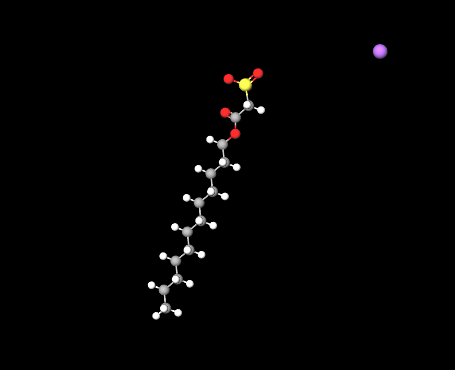Tiiips app: ingredients detective.
Free from Play Store!


Tiiips app: ingredients detective.
Free from Play Store!


| "Descrizione" by Al222 (18869 pt) | 2024-Apr-22 15:47 |
Sodium Lauryl Sulfoacetate (SLSA) is a chemical compound, a surfactant used primarily in personal care products like shampoos, bubble baths, and bath bombs.
The name describes the structure of the molecule:
Chemical Industrial Synthesis Process
What it is used for and where
Unlike the more harsh Sodium Lauryl Sulfate (SLS), Sodium Lauryl Sulfoacetate is known for its ability to produce rich foam while being much gentler on the skin and hair. It is particularly valued in products intended for people with sensitive skin as it does not irritate or dry out the skin. This ingredient also contributes to creating a feeling of cleanliness and softness, making products more enjoyable to use.
Cosmetics - INCI Functions
Main uses and benefits of sodium lauryl sulfoacetate.
Detergency. Provides effective cleaning without overly stripping natural oils from the skin, making it suitable for sensitive skin.
Foaming Properties. Produces a rich and luxurious foam, enhancing the user experience in products such as bubble baths, shampoos, and facial cleansers.
Skin Compatibility. It is known for its skin compatibility, reducing the risk of irritations and allergic reactions compared to harsher detergents.
Biodegradability. Due to its plant-based origin, it is readily biodegradable, helping to reduce the environmental impact of cleaning products.
Versatility. It can be used in a wide range of cosmetic products, from skincare to haircare, due to its effectiveness and gentleness.
Solubility. It is soluble in both water and oil, which facilitates the formulation of cosmetic products that require an oil-in-water emulsion.
Safety
Sodium Lauryl Sulfoacetate is generally considered a safe ingredient in cosmetics (1).
 |  |
Molecular Formula C14H27NaO5S
Molecular Weight 330.42 g/mol
CAS 1847-58-1
UNII D0Y70F2B9J
EC Number 217-431-7
DTXSID4027442
Nikkaji J199.662B
Synonyms:
Dodecyl sodium sulfoacetate
Lathanol
Lathanol LAL
Nacconol LAL
References_____________________________________________________________________
(1) Burnett CL, Bergfeld WF, Belsito DV, Cohen DE, Klaassen CD, Liebler DC, Rettie AE, Ross D, Slaga TJ, Snyder PW, Tilton S, Fiume M, Heldreth B. Sodium Lauryl Sulfoacetate. Int J Toxicol. 2023 Dec;42(3_suppl):100S-101S. doi: 10.1177/10915818231204274. Epub 2023 Sep 28. PMID: 37767974.
Abstract. The Expert Panel for Cosmetic Ingredient Safety reviewed updated information that has become available since their original assessment from 1987, along with updated information regarding product types, and frequency and concentrations of use, and reaffirmed their original conclusion that Sodium Lauryl Sulfoacetate is safe as a cosmetic ingredient in the practices of use and concentration as described in this report.
| Evaluate |